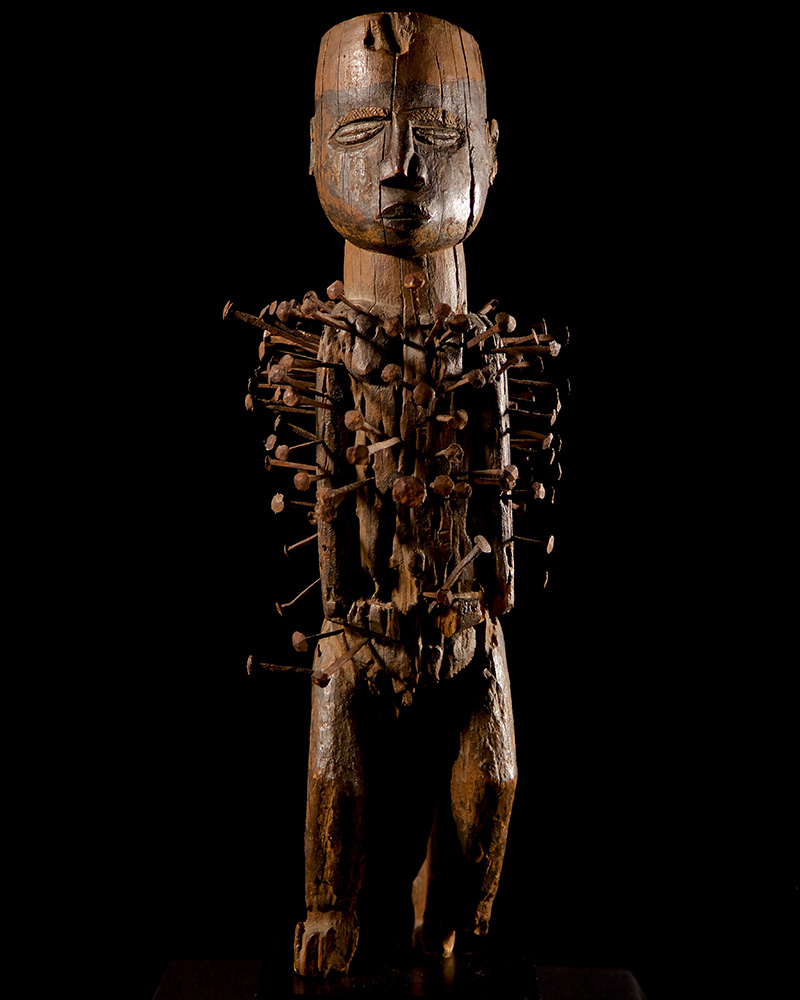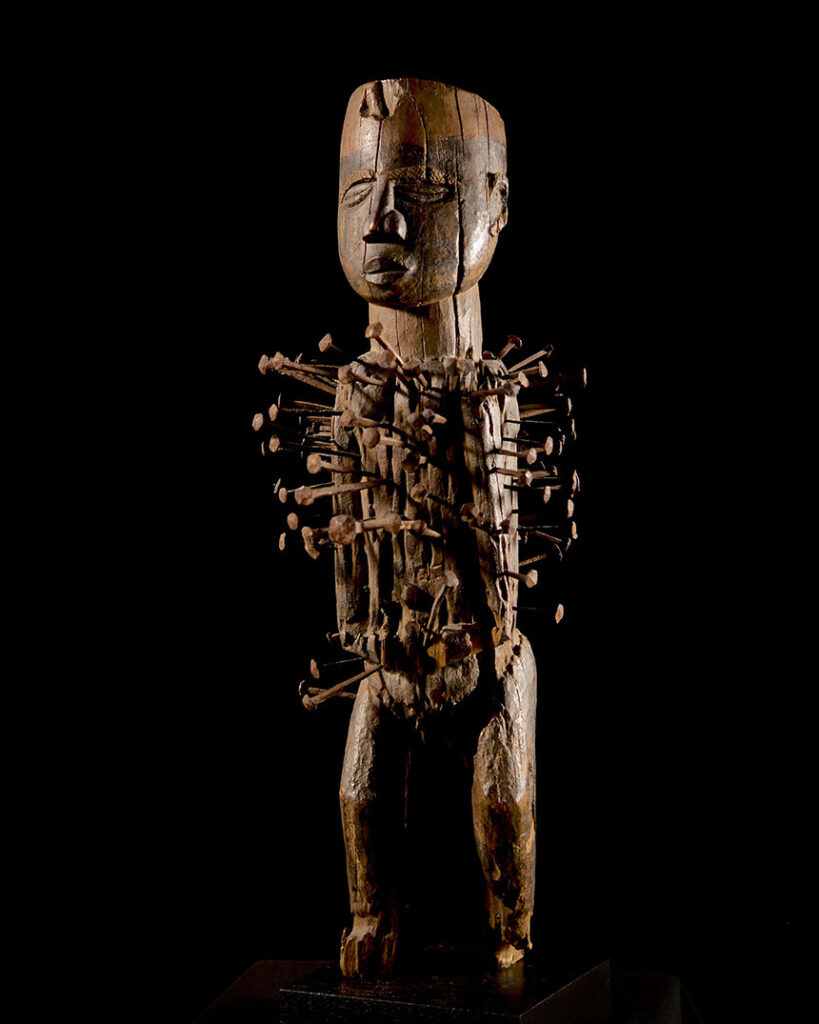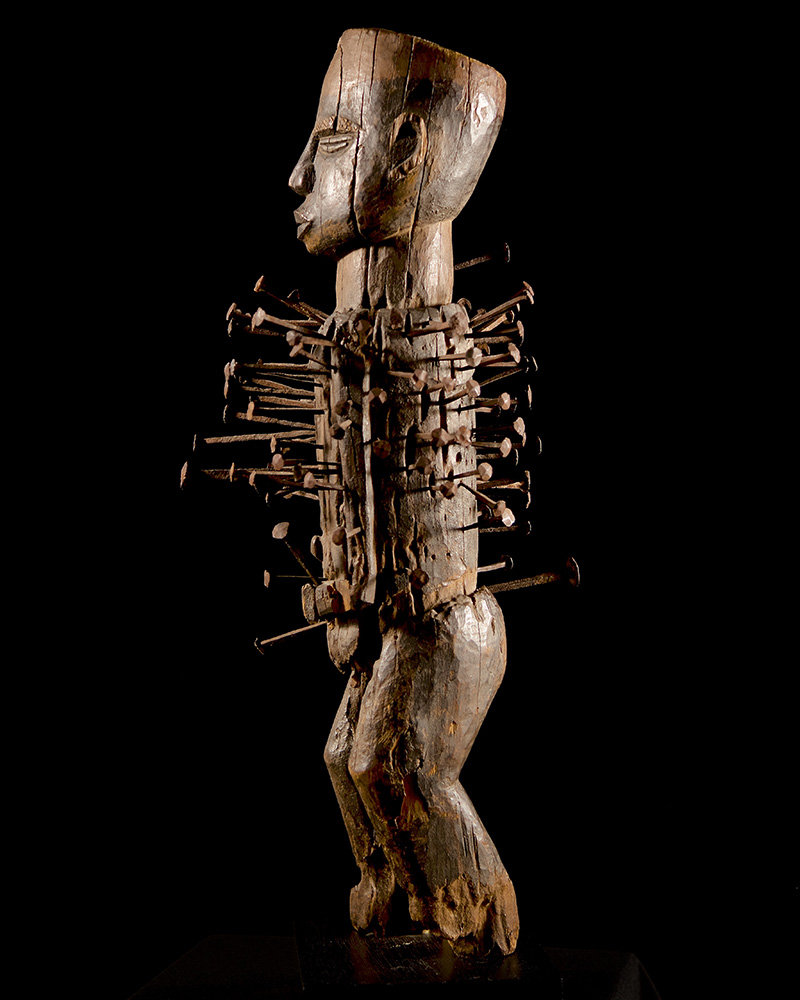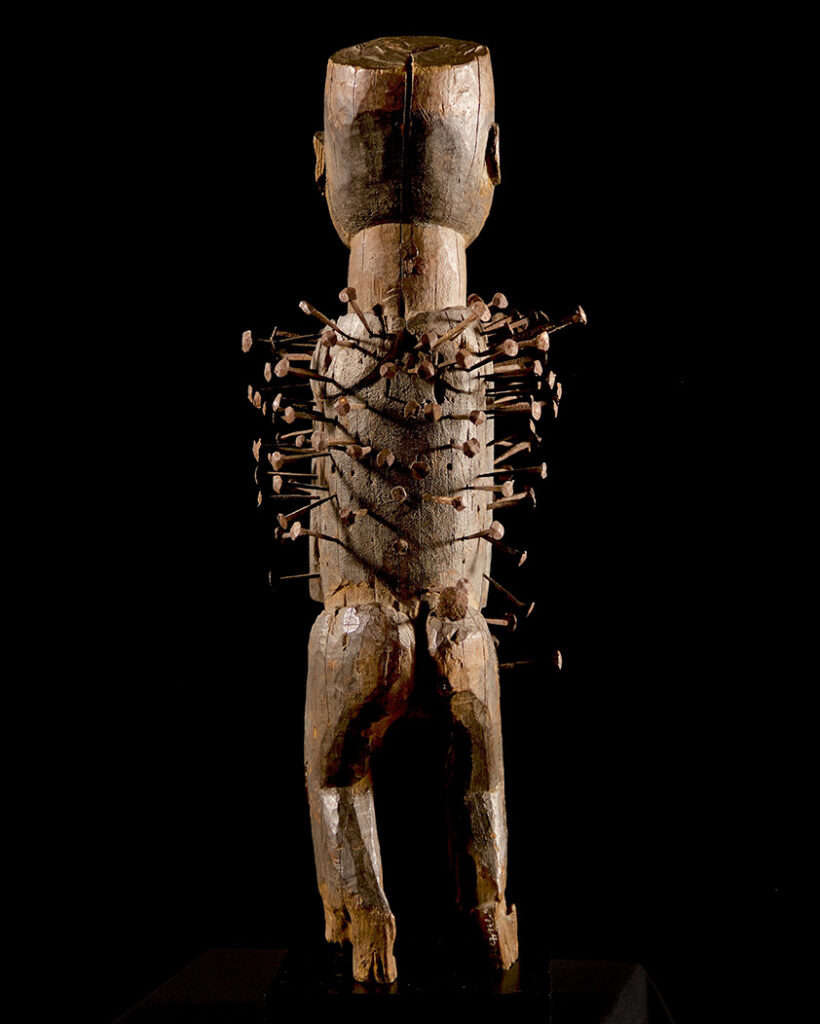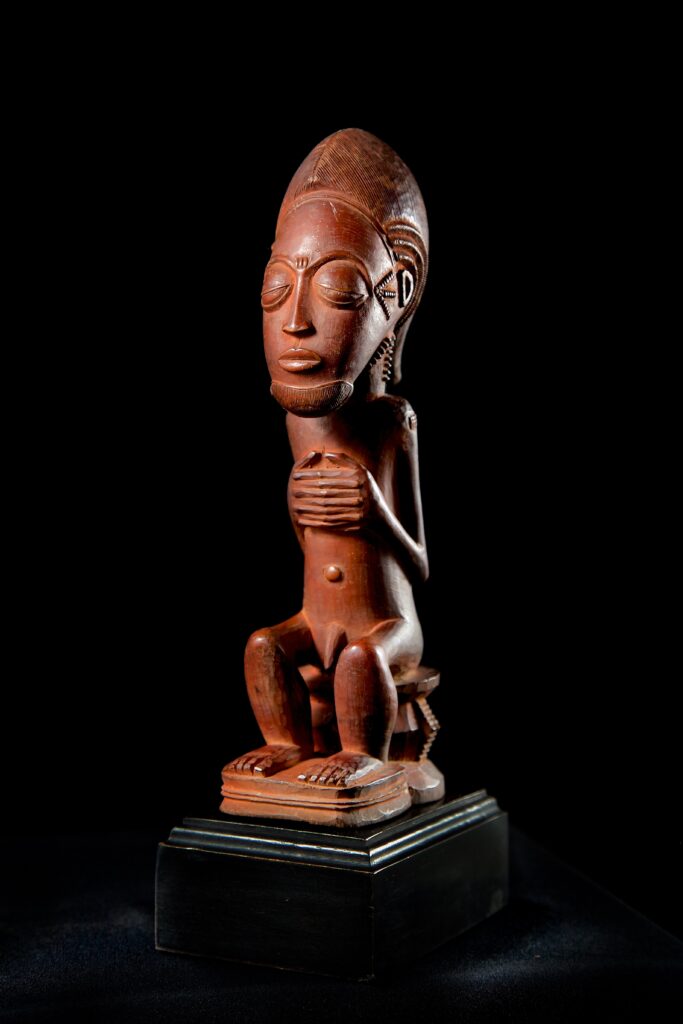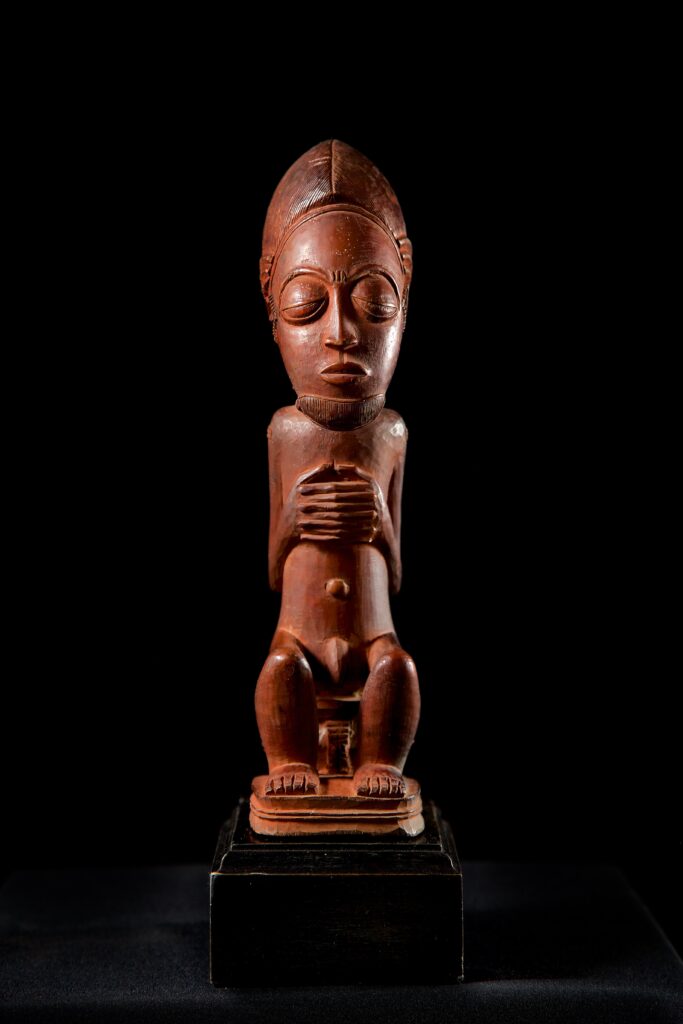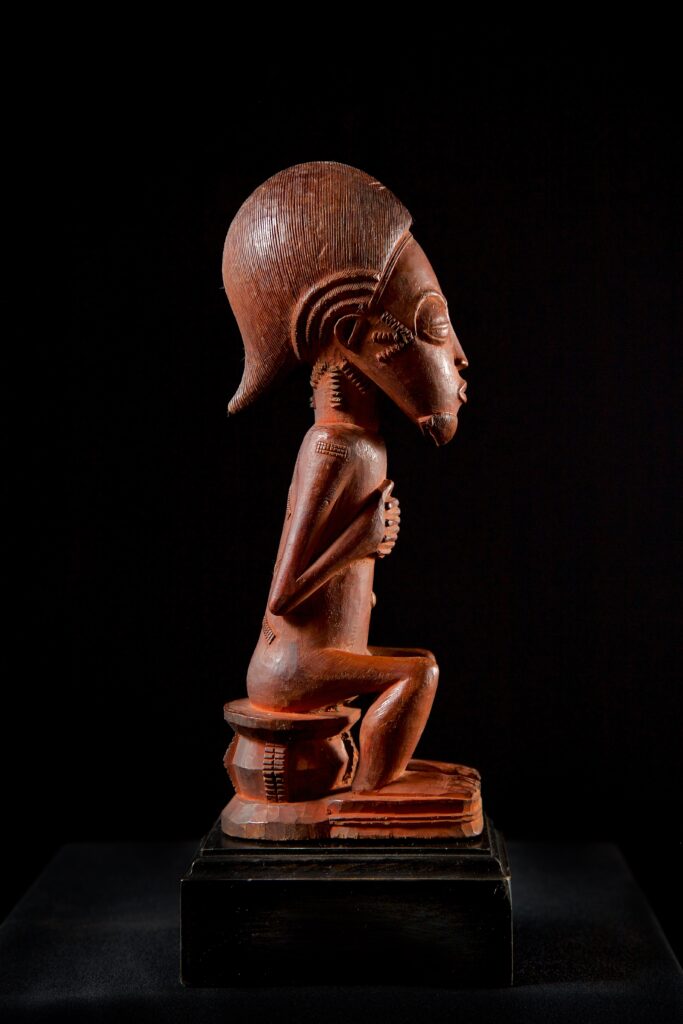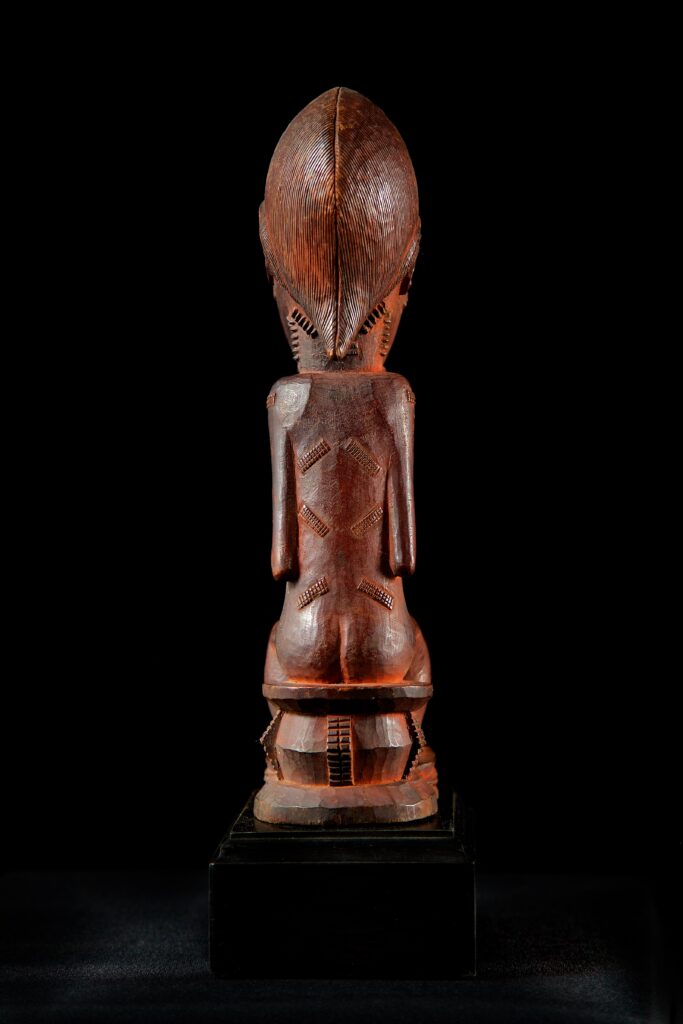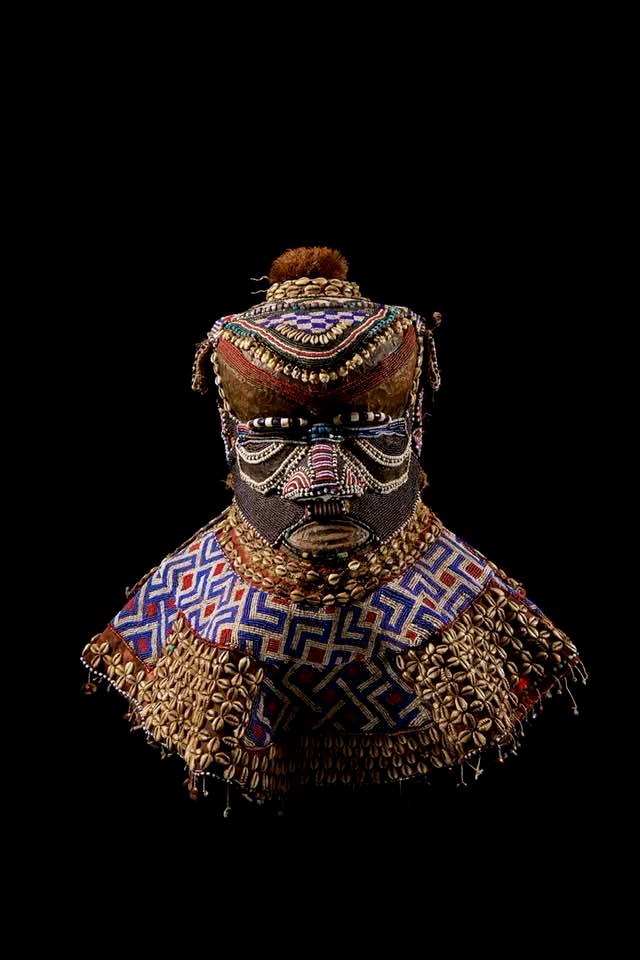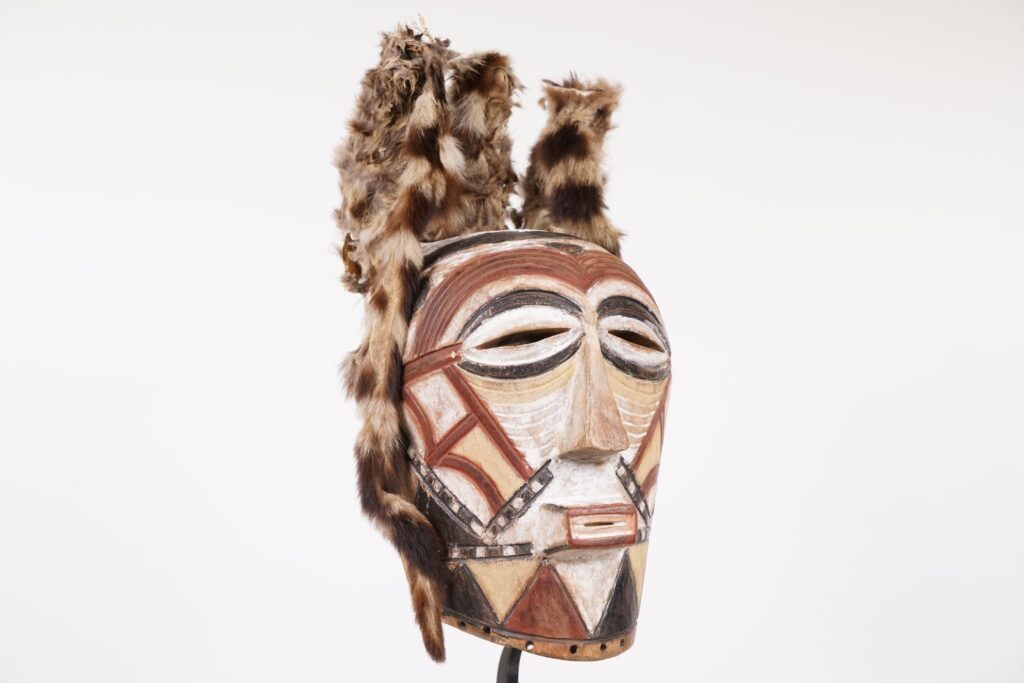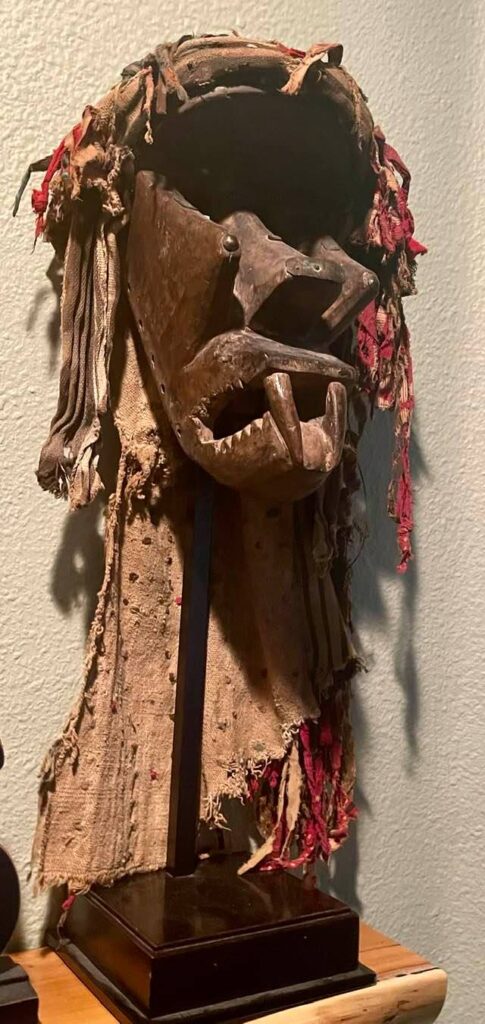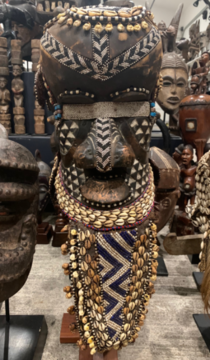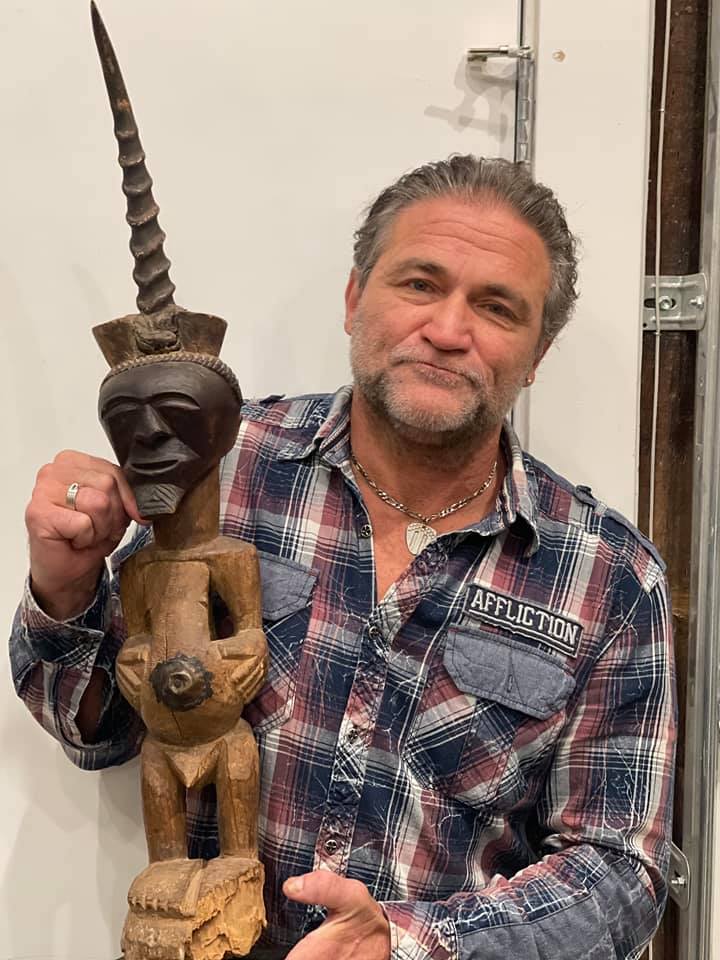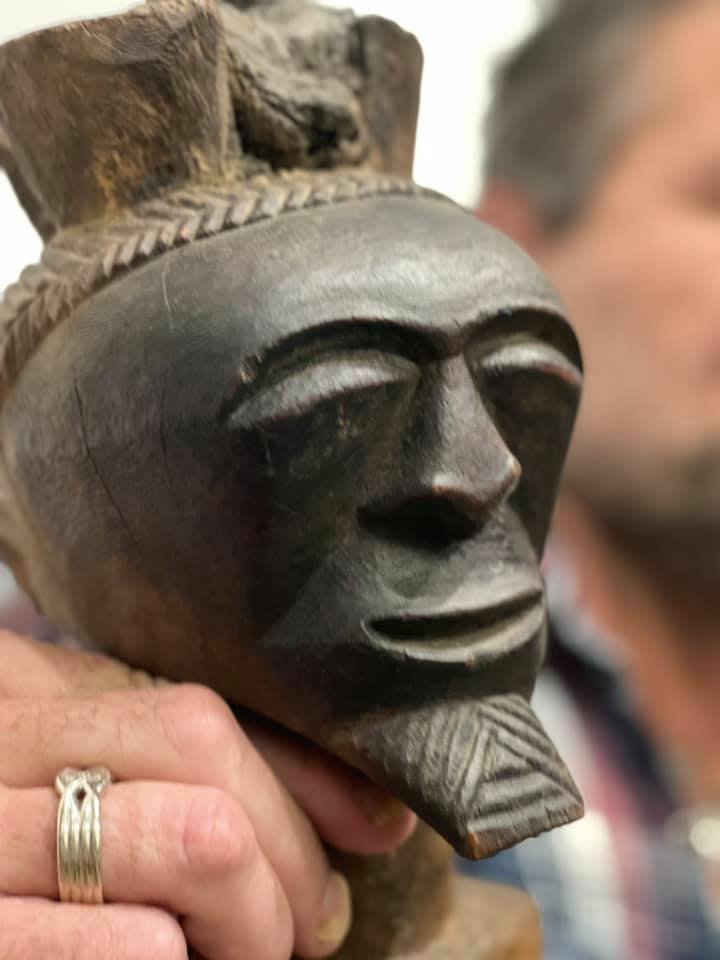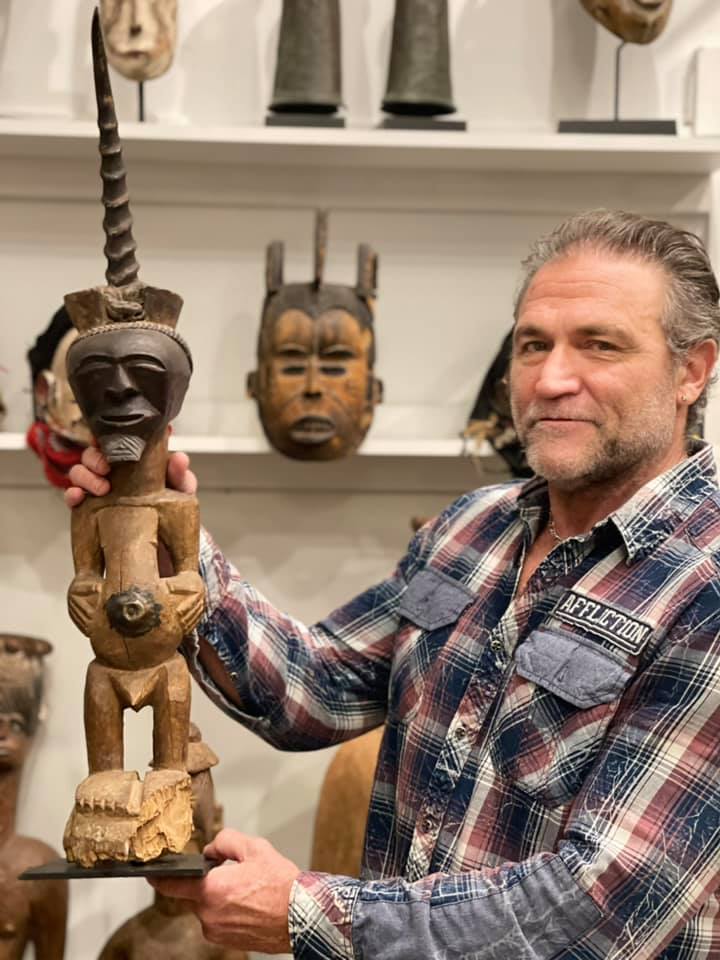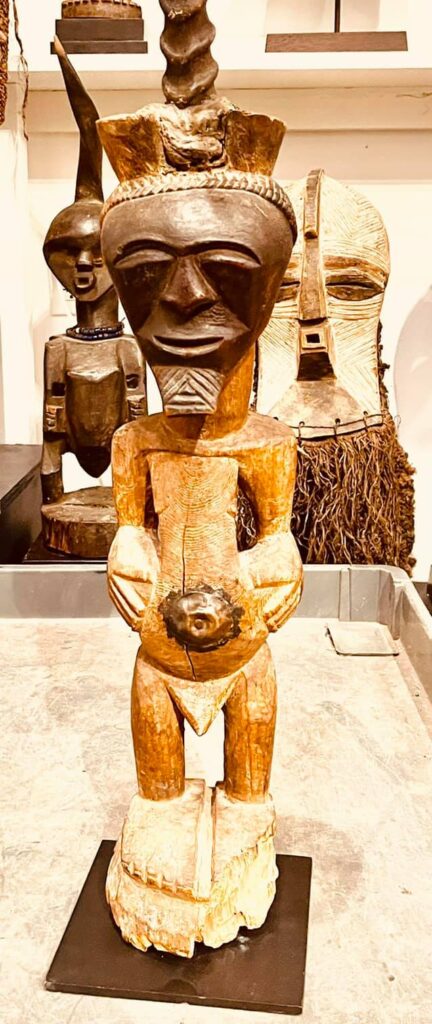Nail Fetish Figure from DR Congo
23″ x 9″ x 10″ & 6.5lbs
Provenance: *May D&F Co. Denver, Colorado, before 1964
*Denver Art Museum, Colorado (inv.1964.292) acquired from the above, 1964
*Cole Harrell, New York, acquired from the above to benefit the Denver Art Museum Acquisitions Fund
Exhibited: Denver Art Museum, Colorado, Frederic C. Hamilton Gallery, 2006-2016
Bakongo Nkondi nail fetishes were used by communities for many reasons including protection against illnesses and evil spirits, and to set in stone contracts and decide argument outcomes. A holy person would activate the statue using magical substances. The Bakongo people also deeply believed in these figures ability to be effective tools to identify and punish wrong doers. The nails would be hammered into the sculpture to provoke action.

